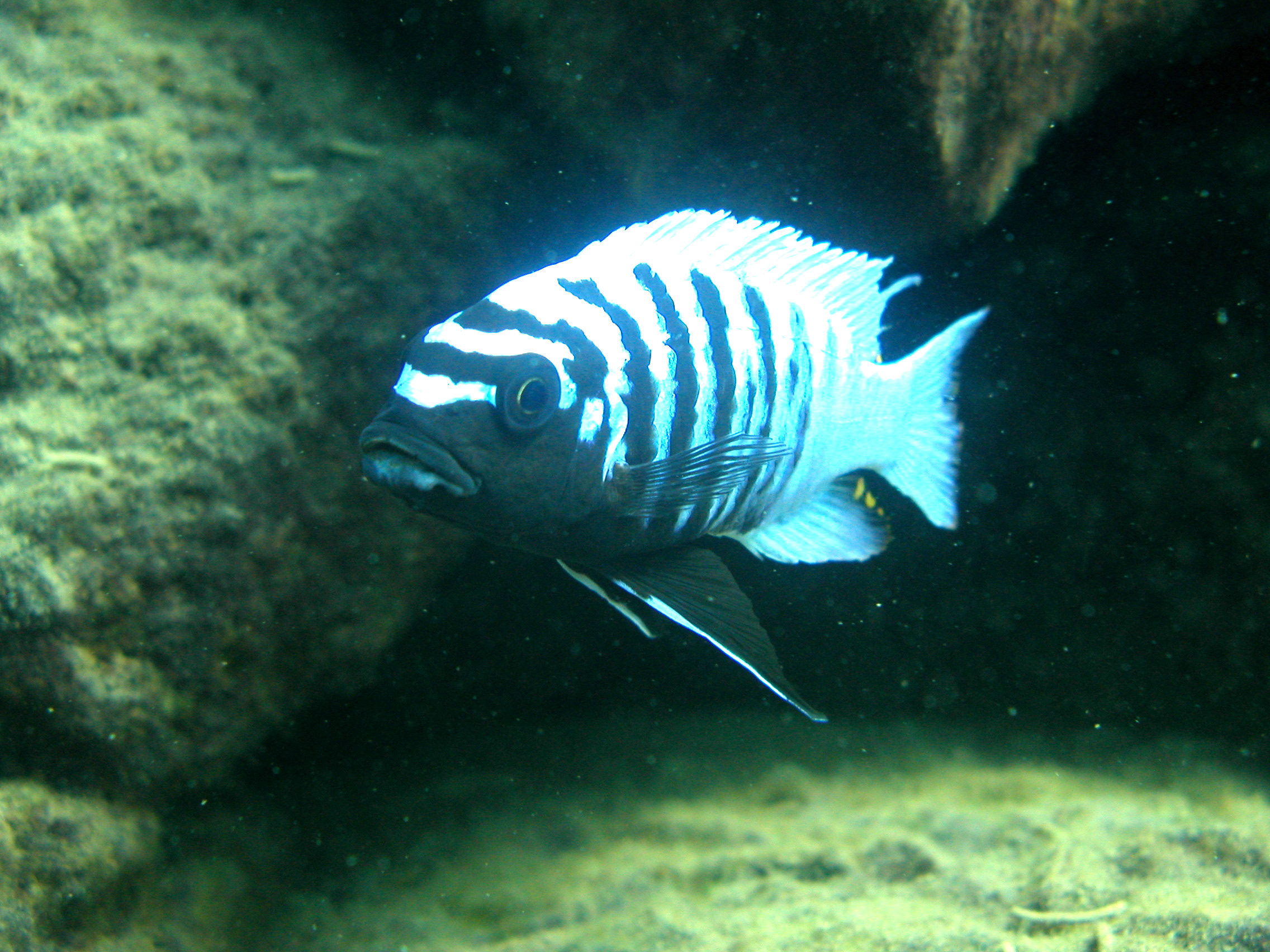Research Interests
Rapidly diverging, species rich systems provide evolutionary biologists with powerful platforms in which fundamental biological questions can be investigated. I have benefited from working on the two rapidly diverging extant lineages, East African cichlid fish and Hawaiian crickets. Within each system I address core biological issues concerning the development and maintenance of biological diversity. My primary research interest is in identifying the factors that contribute to the reproductive isolation of species at the behavioral, ecological and genetic levels.
Past Research
Working within these systems, I’ve had the opportunity to pursue many biological disciplines; ecology, development, neurobiology and behavior. My current interest focuses on the genetics of speciation. In both systems, one or more phenotypes have been identified which contribute to ongoing precopulatory reproductive isolation. My work concerns identifying the genes which contribute to  these phenotypes, and hence, to the reproductive isolation of species. It is through the identification and analysis of genes contributing to reproductive isolation that we can begin to understand the genetics of species divergence.
these phenotypes, and hence, to the reproductive isolation of species. It is through the identification and analysis of genes contributing to reproductive isolation that we can begin to understand the genetics of species divergence.
Within East African cichlids, my and others work has indicated that female choice of male coloration has contributed to the diversification of species. By focusing on two closely related species with dramatically different color patterns, I have begun to dissect the genetic basis of male color patterns using both classical biometric methods and Quantitative Trait Loci mapping.























Kidd, M., P. D. Danley, and T. D. Kocher. 2006. A direct assay of female choice in cichlid fishes: All eggs in one basket. Journal of Fish Biology 68(2):373-384.
P. D. Danley and K. S. Shaw. 2005. Differential developmental programs in two closely related Hawaiian crickets. Annals of the Entomological Society of America 98 (2):219-226.
Sulikowski, J.A., J. Kneebone, S. Elzey, P. D.Danley, W. H. Howell and P.W.C Tsang. 2005. Age and growth estimates of the thorny skate (Amblyraja radiata) in the western Gulf of Maine. Fisheries Bulletin 103(1): 161-168.
Sulikowski, J.A., J. Kneebone, S. Elzey, P. D.Danley, W. H. Howell and P.W.C Tsang. 2005. The reproductive cycle of the thorny skate (Amblyraja radiata) in the western Gulf of Maine. Fisheries Bulletin 103(3): 536-543.
Shaw, K. L., and P. D. Danley. 2003. Behavioral genomics and the study of speciation at a porous species boundary. Zoology 106:261-273.
Streelman, J. T. and P. D. Danley. 2003. The stages of vertebrate evolutionary radiation. Trends in Ecology and Evolution 18 (3): 126-131.
Danley P. D., and T. D. Kocher. 2001. Speciation in rapidly diverging systems: Lessons from Lake Malawi. Molecular Ecology 10:1075-1086.
Markert, J. A., P. D. Danley, and M. E. Arnegard. 2001. New markers for new species: Microsatellite loci and the East African cichlids. Trends in Ecology and Evolution 16 (2): 100-107.
Danley, P. D., J. A. Markert, M. E. Arnegard, and T. D. Kocher. 2000. Divergence with gene flow in the rock-dwelling cichlids of Lake Malawi. Evolution 54 (5): 1725-1737.
Markert, J. A., M. E. Arnegard, P. D. Danley, T. D. Kocher. 1999. Biogeography and population genetics of the Lake Malawi cichlid Melanochromis auratus: Habitat transience, philopatry and speciation. Molecular Ecology 8:1013-1026.
Albertson, R. C., J. A. Markert, P. D. Danley, T. D. Kocher. 1999. Phylogeny of a rapidly evolving clade: The cichlid fishes of Lake Malawi, East Africa. Proc. Natl. Acad. Sci. USA 96: 5107-5010.
Arnegard, M. E., J. A. Markert, P. D. Danley, J. R. Stauffer, Jr., A. Ambali, T. D. Kocher. 1999. Population structure and colour variation in the lithophilous cichlid Labeotropheus fuelleborni Ahl along a recently formed archipelago of rocky habitat patches in southern Lake Malawi. Proc. R. Soc. Lond. B 266:119-130.
Non-Referred Publications:
Markert, J. A., M. E. Arnegard, P. D. Danley. 2001. Interpopulation migration in Mbuna as inferred from DNA fingerprinting data in and around Lake Malawi National Park. Prepared for The Malawi Ministry of Tourism, National Parks, and Wildlife.
In Prep:
Danley, P.D., S. P. Mullen, F. Lui, V. Nene, J. Quackenbush and K. L. Shaw. Submitted. The cricket gene index: A neurological, behavioral, and evolutionary genetic resource. BMC Genomics.
Danley, P. D., and T. D. Kocher. Submitted. Aggression and the diversification of Lake Malawi’s rock-dwelling cichlids. Environmental Biology of Fishes.
Danley, P. D., T. N. deCarvalho, D. J. Fergus, and K. L. Shaw. Submitted. Reproductive asynchrony and the divergence of Hawaiian crickets. Ethology.
Danley, P. D., G. Perta, S. Salzberg, and K. L. Shaw. On improving gene annotation: the need for non-model genomic resources.














